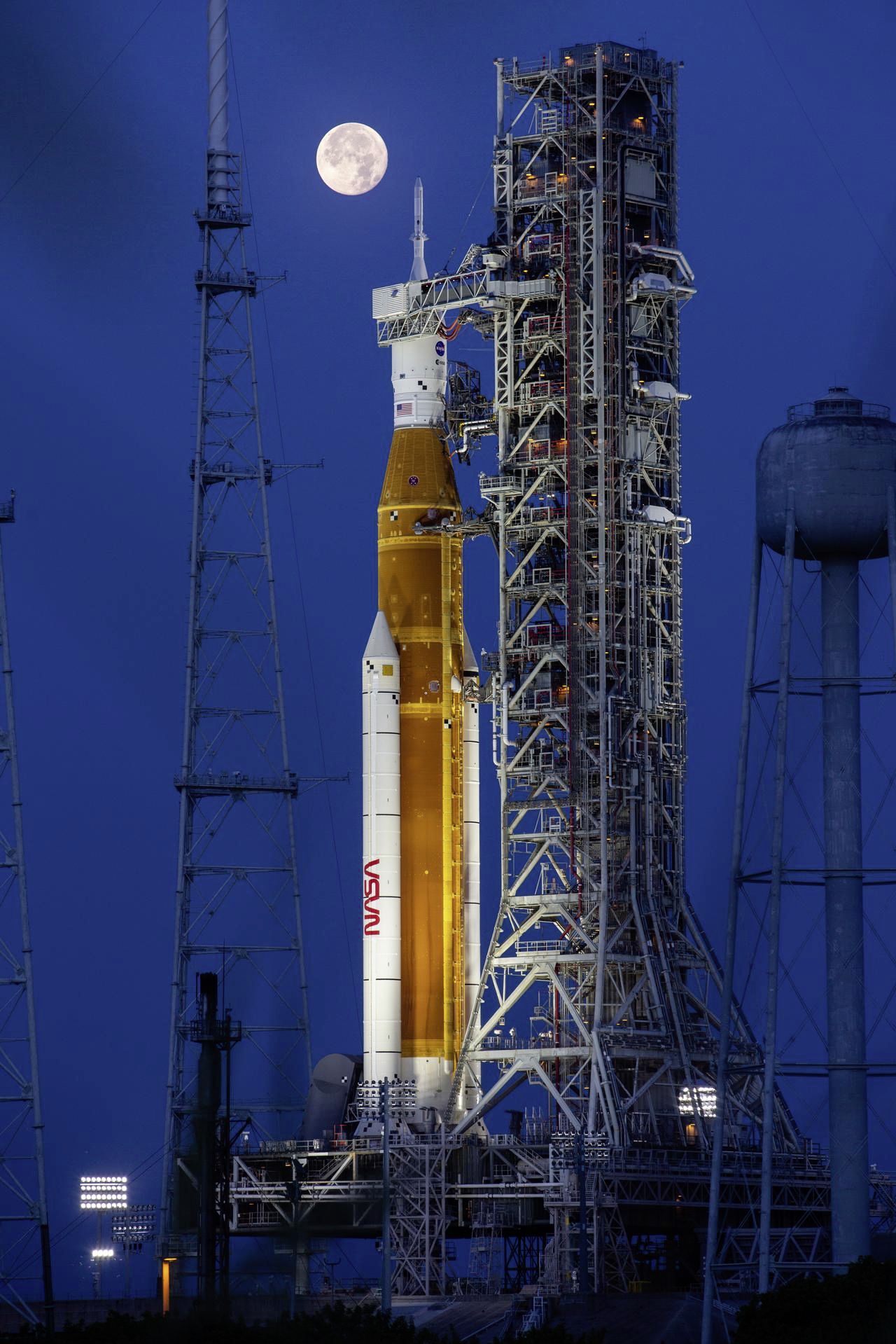On Monday, 50 years after the last moon landing, a rocket was launched on the still-mysterious moon.
The first flight of the Artemis mission takes place without a crew – but the launch of the world’s most powerful rocket is supposed to be a precursor to man’s return to the moon.
Artemis 1 is also a huge icon for NASA, which has been preparing for the mission for more than ten years. It aims to demonstrate that the US space agency is still competitive in the face of the ambitions of China or Elon Musk’s SpaceX.
Hotels in the area are fully booked
The launch from the Cape Canaveral spaceport in Florida is eagerly awaited. Hotels in the area are fully booked, and between 100,000 and 200,000 people want to experience the scene on Monday at 8.33am local time (2.33pm CET). The 98-meter-high, orange and white spacecraft has been ready for days at launch site 39B of the Kennedy Space Center. “The excitement is palpable,” says Janet Petro, director of the center.
The goal of Artemis 1 is to test the SLS rocket and the Orion capsule at its tip, where the crew will later travel, under real conditions. Instead of astronauts, only dolls were on board this time, with sensors recording values of acceleration, vibration and radiation. The cameras document a 42-day journey. A fake selfie has been planned with the Earth and Moon in the background.
View of the far side of the moon
The Orion capsule is designed to orbit the moon, a hundred kilometers from it, and then fire its engines to reach a distance of 40,000 miles behind the moon – a record for a spacecraft designed to transport people.
Above all, the heat shield must be tested, which must withstand a speed of nearly 40,000 kilometers per hour and a temperature half the temperature of the Sun’s surface when it re-enters Earth’s atmosphere. Thousands of people from the United States and Europe prepared for the mission. For example, the European Space Agency ESA contributed to the ESM Service Module, which supplies electricity, water, and oxygen to the Orion capsule.
Some risks remain
Despite years of preparation, there is no guarantee that everything will go smoothly in the task. “We’re doing something very difficult, and that has risks,” says mission manager Mike Sarafin. Despite the numerous tests carried out earlier, the different parts of the capsule and the rocket will fly together for the first time.
NASA plans to continue the experiment even if Orion’s solar panels are not deployed as planned – a risk that will not be dealt with by a crew.

NASA
Next task is in preparation
However, a complete failure would be devastating to the program, which costs $4.1 billion per missile launch and is already five years behind schedule. The next mission, Artemis 2, aims to put astronauts into orbit around the Moon, after which the Artemis 3 crew is scheduled to land on the Moon – as soon as possible in 2025.
Only white men participated in the last moon landing, the Apollo mission in 1972. For the first time, a woman and a black person are said to be among the astronauts on future Artemis missions.
The target is a permanent space station
But not only another moon landing is Artemis’ goal. Plans include a permanent space station in lunar orbit and a base on the planet itself – where astronauts could one day travel to Mars.
But now Artemis 1 should start on Monday. Florida’s weather is fickle at this time of year — and it can throw off the schedule.

“Social media evangelist. Baconaholic. Devoted reader. Twitter scholar. Avid coffee trailblazer.”









More Stories
Longest jets in the universe discovered – giant particle streams as long as 140 Milky Way galaxies in a row
New method reveals 307 supernova remnants
Snapchat is upping the ante on augmented reality glasses